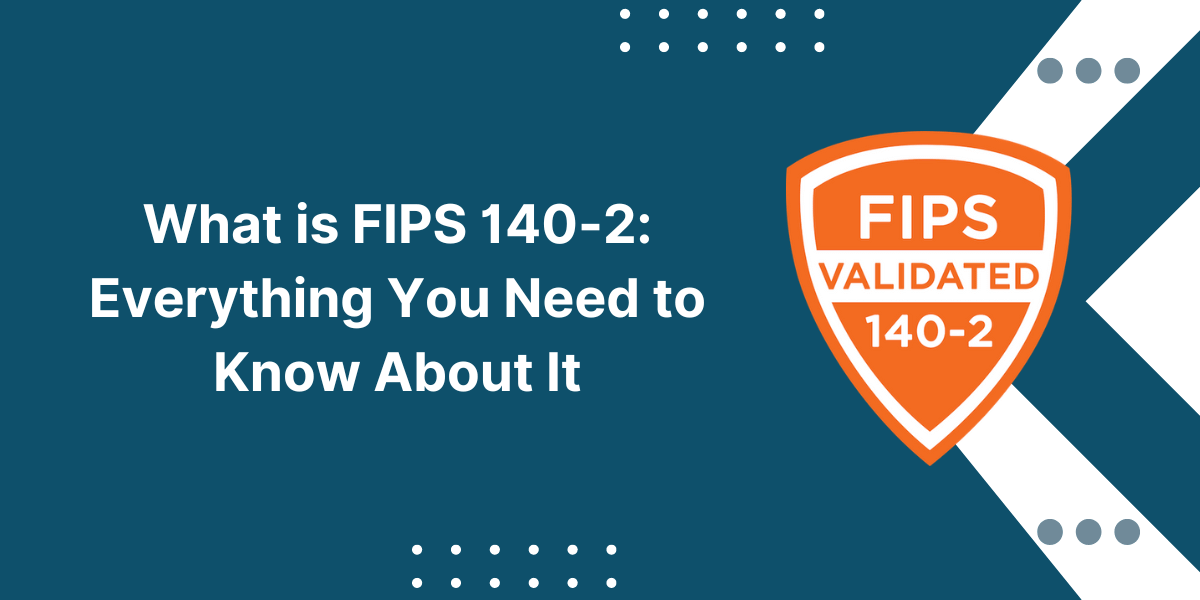Getting Started with Code Signing Certificate Using KSP
A code signing certificate is an important tool for software developers to assure users that their software can be trusted. By signing the code with a certificate, developers can prove their identity to users and show that the code has not been altered or corrupted since it was signed. Key Storage Providers (KSP) are a feature of Windows that provides an interface for managing private keys and certificates on a local machine. Using a KSP to generate and store a code signing certificate can simplify the process compared to using other tools. In this article, you can learn the steps for creating a Code Signing certificate using a Key Storage Provider.
Key Takeaways
- KSPs provide a standard way to store and use certificates and keys on Windows. They integrate with tools like PowerShell and Visual Studio.
- The KSP securely stores certificates and private keys, so developers don’t need to worry about managing keys and certificates themselves.
- With KSPs, the certificate creation process is straightforward. Developers can generate a new self-signed certificate or request a certificate from a CA.
- KSPs include tools to backup, restore, import, and migrate keys and certificates, which makes managing certificates easier over time.
- Once generated, code-signing certificates from a KSP work just like any other code-signing certificate. They authenticate your code identity.
Prerequisites for Using a KSP for Code Signing Certificates
Before diving into the details of using a Key Storage Provider (KSP) to generate a code signing certificate, you need to cover a few prerequisites:
- KSPs Require Windows: KSPs are a Windows-specific feature. So, you’ll need a Windows desktop or server to use a KSP for your code signing certificate.
- Understand Code Signing Basics: It will be helpful to grasp code signing principles, such as why code signing matters and the difference between self-signed and CA-signed certificates.
- PowerShell Skills: You’ll need some PowerShell skills, as it provides the main interface for working with KSPs. You don’t need to be an expert; just know the basics.
- Permissions: To fully manage code signing certificates in a KSP, you’ll need administrator or superuser permissions on your Windows system.
- KSP Setup: Before you can use a KSP, you need to initialize it quickly, which is covered in the next section.
As long as you have a Windows system to work with and understand the basics of code signing, you’ll be ready to use a KSP for your certificate.
Initializing a Key Storage Provider
Before you can start using a Key Storage Provider (KSP) to generate and manage code signing certificates, you need to initialize it. Here are the steps to set up a KSP on Windows:
- Open an Elevated PowerShell Prompt: KSP management requires admin rights, so launch PowerShell as an admin.
- Import the KSP Module: Run Import-Module PKIClient to load the KSP tools.
- Initialize the KSP: Run Initialize-KmsService to initialize the software-based KSP on your system.
- Optionally Initialize Hardware KSP: Use Initialize-KmsService -ProviderName ‘Microsoft Platform Crypto Provider’ to initialize a hardware KSP if available.
Once those steps are complete, your KSP will be ready to generate and store code-signing certificates. The certificates and associated private keys will be securely stored and managed within the KSP.
Next, you can move on to actually using the KSP to create your new code signing certificate.
Generating a New Self-Signed Code Signing Certificate using a KSP
If you don’t need a code signing certificate from a trusted certificate authority (CA), the easiest option is to generate a self-signed certificate using your Key Storage Provider (KSP).
Here is the process:
- Open an Elevated PowerShell Prompt: Run PowerShell as administrator.
- Import the KSP Module: Import-Module PKIClient to load KSP tools.
- Define Certificate Properties: Use New-SelfSignedCertificateEx to define properties like subject, hash algorithm, key usage, etc.
- Generate the Certificate: Run the cmdlet from the previous step to generate the certificate in the KSP.
- Verify the Certificate: List certificates with Get-ChildItem or Get-KmsCertificate to verify yours was created.
- Back Up the Certificate: Use Backup-KmsCertificate to export and back up your new certificate.
- Review Certificate Details: Open the certificate file and review the details, subjects, usages, etc.
Once you have generated a self-signed code signing certificate and stored it in your KSP, you can start using it to sign software and drivers. Just reference it for your code signing tasks.
Requesting a CA-Signed Code Signing Certificate with a KSP
You can request a code signing certificate signed by a trusted certificate authority (CA) for greater assurance and wider trust.
Here is how to request a CA code signing certificate using your Key Storage Provider:
- Generate a Certificate Signing Request: Use New-KmsCertificateSigningRequest to generate a CSR file with your KSP.
- Request Your Certificate: Submit the CSR to your chosen certificate authority to request your code signing certificate.
- Install the CA Certificate: Install the root and intermediate CA certificates into your computer’s Trusted Root store.
- Import Your Certificate: Once issued, use Import-KmsCertificate to import your code signing certificate into your KSP.
- Verify the Certificate: Check that it was imported correctly and verify the certificate details.
- Back Up Your Certificate: Be sure to back up your CA-signed certificate for safekeeping.
- Start Using the Certificate: With your certificate in your KSP, you can now select it when code signing.
Code Signing Usage with a KSP Certificate
Once you have successfully generated or imported a code signing certificate into your Key Storage Provider (KSP), you can start putting it to use for signing code. Here are some examples of utilizing a KSP certificate:
- Sign PowerShell Scripts: Set-AuthenticodeSignature uses the certificate in your KSP to sign a PowerShell script.
- Sign Code with Visual Studio: In Visual Studio project properties, select your KSP certificate as the signing certificate.
- Sign .NET Assemblies: Use the SignTool utility and reference your KSP certificate by its thumbprint to sign assemblies.
- Sign Drivers: When using Windows Driver Kit tools, choose your KSP certificate to digitally sign your driver package.
- Sign MSI Installers: Select the certificate from your KSP when using Signtool or MsiSign to sign a Windows installer package.
- Sign Executables: Use your KSP’s code signing certificate with SignTool to sign .EXE or .DLL files.
The great thing about using a KSP is that all the private keys are managed automatically behind the scenes. You need to select your certificate by thumbprint, and the signing will be handled seamlessly.
How to Renewing a Code Signing Certificate Stored in a KSP
Code signing certificates eventually expire and need to be renewed to continue signing codes. Renewing a certificate stored in a Key Storage Provider (KSP) is straightforward:
- For a self-signed certificate, simply generate a new one using the same process.
- For a CA-signed certificate:
- Generate a new certificate signing request from the KSP.
- Submit the CSR to your certificate authority to request a renewed certificate.
- Install any new CA certificates needed.
- Import the renewed code signing certificate into your KSP.
- Update Any Tools or Scripts: Change settings to use the new certificate’s thumbprint where applicable.
- Test Signing with the New Certificate: Double check that code is signing properly with the renewed certificate.
- Revoke the Old Certificate: Once confirmed working, revoke the expired certificate for better security.
Backing Up and Restoring KSP Certificates
It’s crucial to regularly back up any important certificates stored in your Key Storage Provider (KSP).
Here are the best practices for backing up and restoring KSP code signing certificates:
- Use Backup-KmsCertificate: This PowerShell cmdlet properly exports certificates from a KSP including private keys.
- Backup Frequently: Any time you make changes, back up your certificates. Store backups in multiple secure places.
- Label Backups: Clearly label certificate backup files so you can find the correct version.
- Test Restoring: Validate the backup process by periodically fully restoring a certificate.
- Store Backup Keys Securely: Treat certificate backups as sensitive since they contain private keys.
- Restore to KSPs Only: Certificate backups with private keys can only be imported back into a KSP, not the system store.
Migrating Certificates from a KSP to a New System
If you are migrating to a new Windows system, you’ll need to transfer any existing code signing certificates from your current Key Storage Provider (KSP) to the new one.
Here is how to migrate KSP certificates:
- Back up all certificates and private keys from the current KSP using Backup-KmsCertificate.
- Install the PKI Client PowerShell module on the new system and initialize its KSP.
- If needed, transfer the certificate backup files to the new system. Keep backups secure.
- Use Import-KmsCertificate and provide the password to import each certificate backup into the new KSP.
- Verify certificates show correctly in the new KSP and test signing actions.
- Once fully migrated, revoke any active certificates left in old KSP and disable that KSP.
Final Thoughts
Using a Key Storage Provider is an effective approach for creating and managing code signing certificates on Windows. KSPs simplify the certificate generation process while securely storing private keys. Once a code signing certificate is in a KSP, it can be seamlessly used to sign PowerShell scripts, drivers, installers, DLLs, and executables.
Best practices like regular backups and careful migration ensure your code signing certificates secured in a Key Storage Provider remain protected and available throughout their lifetime. Following the processes outlined here will have you up and running with trusted KSP code signing certificates in no time.
FAQs about KSP Code Signing Certificates
What are the advantages of using a KSP for code signing certificates?
Some benefits of using a KSP include simplified certificate and key management, secure storage of private keys, easy signing workflows, and tool integration like PowerShell and Visual Studio.
What are the best practices for managing KSP certificates?
Best practices include initializing the KSP correctly at first setup, generating strong key pairs, using unique and complex passwords, strictly controlling access, and creating regular backups stored securely.
Can I use a KSP certificate for EV code signing?
Yes, you can use an EV Code Signing certificate from a trusted CA with a KSP. The KSP securely stores the private key required for EV code signing.
How does code signing with a KSP certificate differ from using the certificate store?
The main difference is the private key is stored and used directly by the KSP instead of on disk. Otherwise, code signing works the same once the certificate itself is selected.
Do I need to migrate KSP certificates if I get a new computer?
Yes, you should back up and migrate any important KSP certificates, like code signing, to new computers to avoid disruption. The certificate backups can only be imported into KSPs.
Can I import a code signing certificate without the private key into a KSP?
No, a KSP requires both the public certificate data and the associated private key to utilize a code signing certificate properly.

Priya Mervana
 Verified Web Security Experts
Verified Web Security Experts
Priya Mervana is working at SSLInsights.com as a web security expert with over 10 years of experience writing about encryption, SSL certificates, and online privacy. She aims to make complex security topics easily understandable for everyday internet users.



